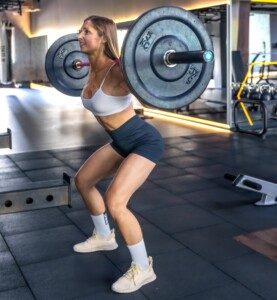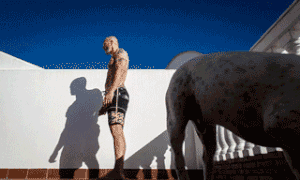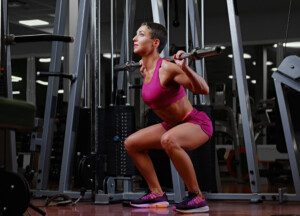
Strength Training and Its Aerobic Effect
An intense set of lifting weights will raise heart rate.
Though the set may last 10-30 seconds, this is all that’s required to force the cardiovascular system to adapt to the stimulus.
The longer an intense strength training set, the more the cardiorespiratory system must work.
After a set of 20 reps with heavy weight in a compound lower body exercise, your heart will be thumping.

Freepik/pvproductions
Twenty reps of dumbbell curls or triceps kickbacks won’t do much for heart rate.
But 20 reps of a heavy full range squats, leg presses, or pull-ups will spike heart rate to supply these multiple large muscle groups with lots of oxygen.
Strength training indeed produces an aerobic training effect, even though this type of exercise is called “anaerobic.”
You must lift intensely with compound (multi-joint) exercises to get the cardio effect I just described.
When compound movements are performed this way, a fat loss effect is greater than when strength training is performed with low reps.
Strength training does not replace cardio exercises, so you should always have cardio workouts as a regular feature in your fat loss regimen.
Burst Training for Fat Loss
A single burst of high energy physical activity that lasts for around 60 seconds, done a total of eight times spread throughout the day, will actually do far more for fat loss than will an hour and a half nonstop on any type of cardio equipment, or jogging or bicycling outdoors.

Taco Fleur/CreativeCommons
This is because 60 seconds of highly intense movements provoke a fat-burning hormonal response, making these hormones continue to circulate throughout your body in elevated amounts, all day long, bringing up resting metabolic rate.
Squat Form
The squat is one of the premier exercises for gaining strength and achieving weight loss.
Before using a bar, first master your form with bodyweight squats in front of a mirror. When you feel that your form is good, use a light bar.

Freepik.com/fxquadro
The Web is full of videos of people executing really bad squat form. It’s not surprising that many of these trainees are using a heavy barbell.
People are so eager to be “squatting big” that they never learn good, efficient form.
Proper form is vital for avoiding back injury and for maximizing fat loss and strength gain results.
The back squat should be powered by the glutes and legs, not the lower back.
When you feel confident squatting with a light bar, enlist a certified personal trainer inspect your form.
Make sure that the trainer views your profile to get a good look at your lower back as you squat, to make sure that you do not lose the lumbar arch. Ask the trainer to watch your feet and knees for proper tracking.
By implementing these 3 exercise tips, you will expedite reaching your fat loss and strength gain goals.
























